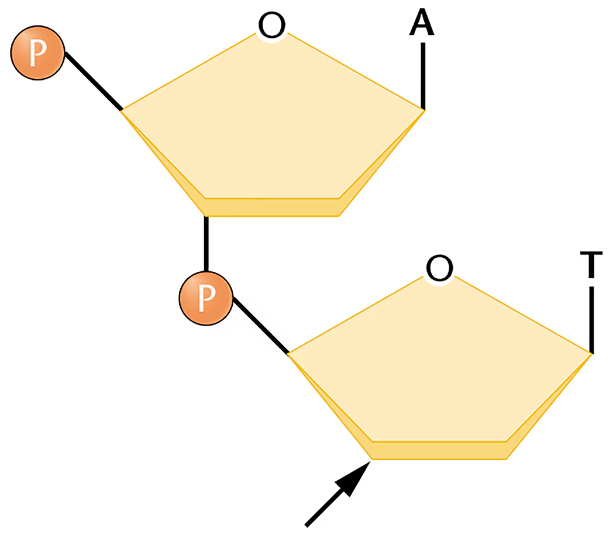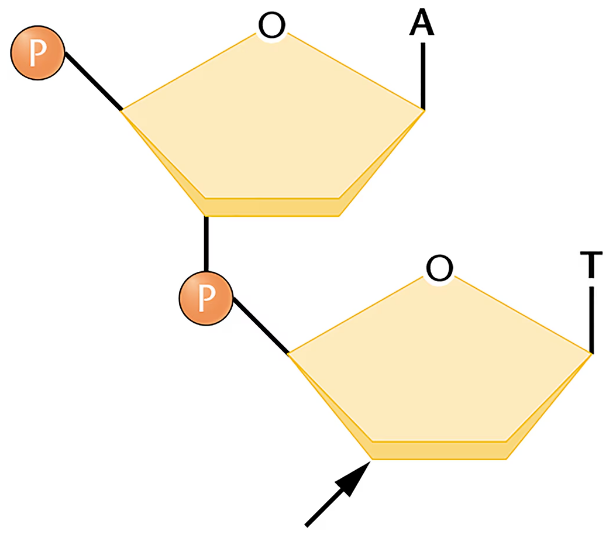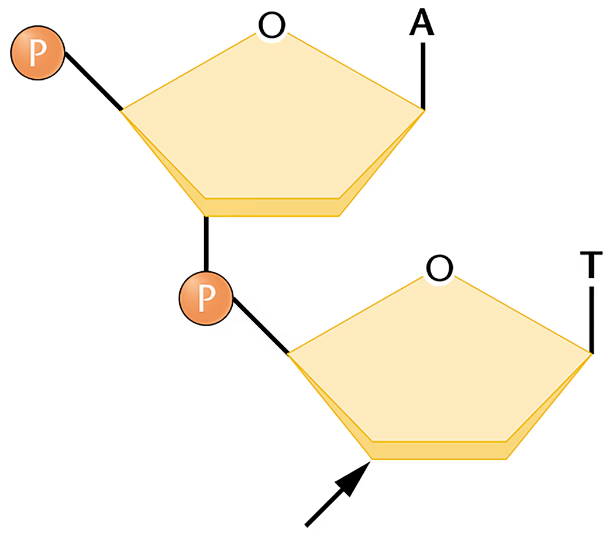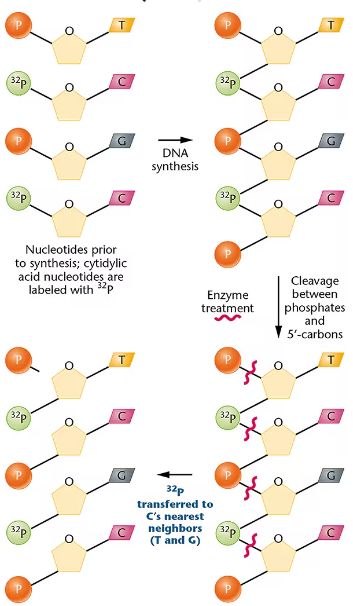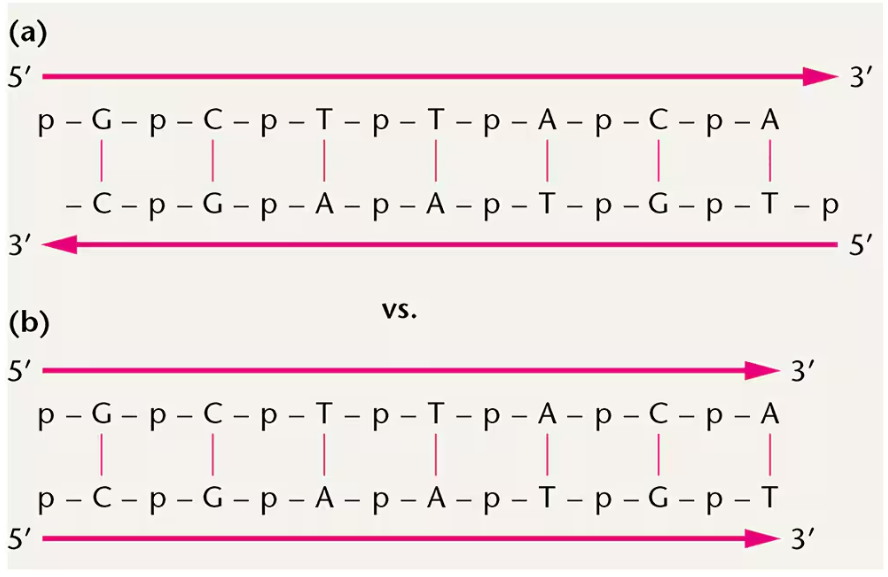 Back
BackProblem 23a
Many of the gene products involved in DNA synthesis were initially defined by studying mutant E. coli strains that could not synthesize DNA.
The dnaE gene encodes the α subunit of DNA polymerase III. What effect is expected from a mutation in this gene? How could the mutant strain be maintained?
Problem 23b
Many of the gene products involved in DNA synthesis were initially defined by studying mutant E. coli strains that could not synthesize DNA.
The dnaQ gene encodes the ε subunit of DNA polymerase. What effect is expected from a mutation in this gene?
Problem 24
In 1994, telomerase activity was discovered in human cancer cell lines. Although telomerase is not active in most human adult cells, all cells do contain the genes for telomerase proteins and telomerase RNA. Since inappropriate activation of telomerase may contribute to cancer, why do you think the genes coding for this enzyme have been maintained in the human genome throughout evolution? Are there any types of human body cells where telomerase activation would be advantageous or even necessary? Explain.
Problem 25
The genome of D. melanogaster consists of approximately 1.7x10⁸ base pairs. DNA synthesis occurs at a rate of 30 base pairs per second. In the early embryo, the entire genome is replicated in five minutes. How many bidirectional origins of synthesis are required to accomplish this feat?
Problem 26
Assume a hypothetical organism in which DNA replication is conservative. Design an experiment similar to that of Taylor, Woods, and Hughes that will unequivocally establish this fact. Using the format established in Figure 11.5, draw sister chromatids and illustrate the expected results establishing this mode of replication.
Problem 27a
DNA polymerases in all organisms add only 5' nucleotides to the 3' end of a growing DNA strand, never to the 5' end. One possible reason for this is the fact that most DNA polymerases have a proofreading function that would not be energetically possible if DNA synthesis occurred in the 3' to 5' direction.
Sketch the reaction that DNA polymerase would have to catalyze if DNA synthesis occurred in the 3' to 5' direction.
Problem 27b
DNA polymerases in all organisms add only 5' nucleotides to the 3' end of a growing DNA strand, never to the 5' end. One possible reason for this is the fact that most DNA polymerases have a proofreading function that would not be energetically possible if DNA synthesis occurred in the 3' to 5' direction.
Consider the information in your sketch and speculate as to why proofreading would be problematic.
Problem 28a
Assume that the sequence of bases shown below is present on one nucleotide chain of a DNA duplex and that the chain has opened up at a replication fork. Synthesis of an RNA primer occurs on this template starting at the base that is underlined.
If the RNA primer consists of eight nucleotides, what is its base sequence?
3'.......GGCTACCTGGATTCA....5'
Problem 28b
Assume that the sequence of bases shown below is present on one nucleotide chain of a DNA duplex and that the chain has opened up at a replication fork. Synthesis of an RNA primer occurs on this template starting at the base that is underlined.
In the intact RNA primer, which nucleotide has a free 3'-OH terminus?
3'.......GGCTACCTGGATTCA....5'
Problem 29
Reiji and Tuneko Okazaki conducted a now classic experiment in 1968 in which they discovered a population of short fragments synthesized during DNA replication. They introduced a short pulse of ³H-thymidine into a culture of E. coli and extracted DNA from the cells at various intervals. In analyzing the DNA after centrifugation in denaturing gradients, they noticed that as the interval between the time of ³H-thymidine introduction and the time of centrifugation increased, the proportion of short strands decreased and more labeled DNA was found in larger strands. What would account for this observation?
Problem 30a
Consider the drawing of a dinucleotide below.
Is it DNA or RNA?
Problem 30b
Consider the drawing of a dinucleotide below.
Is the arrow closest to the 5' or the 3' end?
Problem 30c
Consider the drawing of a dinucleotide below.
Suppose that the molecule was cleaved with the enzyme spleen phosphodiesterase, which breaks the covalent bond connecting the phosphate to C-5'. After cleavage, to which nucleoside is the phosphate now attached (A or T)?
Problem 31
To gauge the fidelity of DNA synthesis, Arthur Kornberg and colleagues devised a technique called nearest-neighbor analysis, which determines the frequency with which any two bases occur adjacent to each other along the polynucleotide chain (J. Biol. Chem. 236: 864–875). This test relies on the enzyme spleen phosphodiesterase (see the previous problem). DNA is synthesized by polymerization of 5'-nucleotides—that is, each nucleotide is added with the phosphate on the deoxyribose. However, as shown in the accompanying figure, the phosphodiesterase enzyme cleaves DNA between the phosphate and the C-5' atom, thereby producing 3'-nucleotides. In this test, the phosphates on only one of the four nucleotide precursors of DNA (cytidylic acid, for example) are made radioactive with ³²P, and DNA is synthesized. Then the DNA is subjected to enzymatic cleavage, in which the radioactive phosphate is transferred to the base that is the 'nearest neighbor' on the 5' side of all cytidylic acid nucleotides.
Following four separate experiments, in each of which a different one of the four nucleotide types is radioactive, the frequency of all 16 possible nearest neighbors can be calculated. When Kornberg applied the nearest-neighbor frequency test to the DNA template and resultant product from a variety of experiments, he found general agreement between the nearest-neighbor frequencies of the two. Analysis of nearest-neighbor data led Kornberg to conclude that the two strands of the double helix are in opposite polarity to one another. Demonstrate this approach by determining the outcome of such an analysis if the strands of DNA shown here are (a) antiparallel versus (b) parallel:

